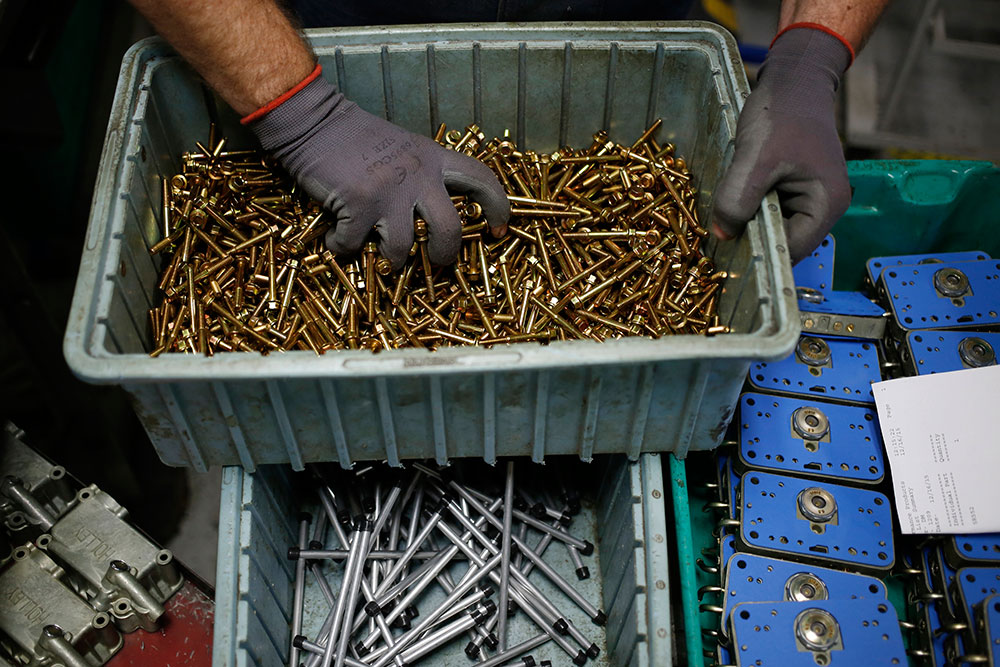制造业将迎来革命性的变化:一切都变成“服务”

“越来越多我们认为有价值的东西变得越来越轻。越来越多价值集中在没有重量和质量的物品中。无形资产实际上变成了经济驱动力,如果我们能够随时随地将无形资产交付给任何人,资产的即时性特征也意味着不必再实际拥有。”
本段摘自《连线》杂志(Wired)的联合创始人,也是富有远见的未来学家凯文·凯利的话,他的意思是“计划报废时代”即将结束。时机已经成熟!几十年来,人们购买了大量汽车、电器和电子产品,种种产品都经过精心设计,固定一段时间后就会报废。作为称职的消费者,我们背负的期望是规律地用一次性垃圾填满生活(还有垃圾堆)。
向过去的一切说再见吧。
但如果真如凯利暗示,数字服务和订阅等“无形资产”占据上风,是否意味着制造业丧钟敲响?并非如此。我认为目前的制造业正在经历重生,与二十年前软件业的情况非常相似。
20世纪80年代和90年代,软件都是盒装。要获得技术支持就得拨打800号码还得等很久。后来,Salesforce公司出现并改变了一切,不再有光盘也没有盒子,通过互联网提供免费的产品更新。其他部分都是历史了。如今人们不再需要购买或拥有软件,只要点开浏览器或下载喜欢的应用程序即可。
我很幸运曾经在Salesforce创立初期担任高管,至今还记得一切发生变化的那天,也就是通过互联网发布第一版产品的日子。在此之前,软件工程师并不知道人们如何使用产品。突然间,显示器上亮起了实时使用数据,那种体验难以言喻。
如今,全世界的工业设计师和工程师都有类似的体验。汽车工程师可以看见司机如何驾驶汽车,洗衣机设计师能够看到人们实际使用了多少洗衣粉。忽然之间,人人都成了数据科学家。
在物联网的支持下,新一代制造商可以按照分钟来了解人们如何使用自家产品,从而更深入积累洞察和智慧,用以指导投资和创造。结果如何?现在制造业能够提供用户追求的结果,而不是简单地推销产品。
物理世界即将跟软件行业一样迎来革命性的变化。一切都变成“服务”。新世界会是什么样?以下是我发现的五大主要趋势:
所有权衰退
最近哈里斯民意测验(Harris Poll)进行了消费者偏好变化的国际调查,结果指向同一个方向,即所有权逐渐消失。全世界四分之三(75%)的成年人认为,未来人们会订阅更多服务,拥有的实体“物品”更少。更愿意为实际使用付费而不是支付固定费用的受访者比例大致相同。要列出订阅服务前三大优势?便利(42%)、节省成本(35%)和多样性(35%)。
物质主义衰落
大约30年前,成功意味着物质主义和跟身边人攀比。当然了,只要有人存在就有贪婪和贪欲存在,但地位和个人成就感的概念正在从炫耀性财产转变为诱人的经历。Instagram就是明显的例子。如何解释该现象?我认为可以归结为一个词:用户关系,也是全新消费者观念,更重视人而不是物品,更重视体验而不是产品,重视使用权而不是所有权。
商业驱动可持续性兴起
从所有权长期全面转向用户关系将对环境产生深远的影响。企业的可持续性和环保责任将从“可有可无”变成经济上的迫切需求。为什么?因为现在制造商要负责维护并重新设计生产的设备,消费者无需负责。例如,汽车公司的经营方式更像车队经理。如果无法有效且负责任地做到,就会在竞争中输给对手。就这么简单。
真正以客户为中心的商业模式兴起
知道,知道。每家公司都声称客户导向。但是,如果商业模式极其依赖将从货架上的商品推给匿名消费者,就真能够做到客户导向吗?为了突出销售渠道,牺牲了多少对顾客的关注?目前,公司的整体经营、产品、推广、销售乃至财务都必须围绕着客户利益最大化,因为现在价值的关键在于关系而不是产品。是时候开始建立直接联系了。
消费成为新的价值判断标准
最后,如果想在新经济模式中成功,就要开始关注消费而不是销量。要看顾客开了多远而不是卖了多少辆车。要看用户玩了多少小时而不是卖了多少游戏。要看用户用了多少功能而不是下载量。那才是真金所在。那才是用户关系的生动体现。
向R.E.M.道歉,这确实是传统制造业的终结。但我感觉还好。(财富中文网)
左霆(Tien Tzuo)是Zuora公司的首席执行官和创始人。
译者:梁宇
审校:夏林

“越来越多我们认为有价值的东西变得越来越轻。越来越多价值集中在没有重量和质量的物品中。无形资产实际上变成了经济驱动力,如果我们能够随时随地将无形资产交付给任何人,资产的即时性特征也意味着不必再实际拥有。”
本段摘自《连线》杂志(Wired)的联合创始人,也是富有远见的未来学家凯文·凯利的话,他的意思是“计划报废时代”即将结束。时机已经成熟!几十年来,人们购买了大量汽车、电器和电子产品,种种产品都经过精心设计,固定一段时间后就会报废。作为称职的消费者,我们背负的期望是规律地用一次性垃圾填满生活(还有垃圾堆)。
向过去的一切说再见吧。
但如果真如凯利暗示,数字服务和订阅等“无形资产”占据上风,是否意味着制造业丧钟敲响?并非如此。我认为目前的制造业正在经历重生,与二十年前软件业的情况非常相似。
20世纪80年代和90年代,软件都是盒装。要获得技术支持就得拨打800号码还得等很久。后来,Salesforce公司出现并改变了一切,不再有光盘也没有盒子,通过互联网提供免费的产品更新。其他部分都是历史了。如今人们不再需要购买或拥有软件,只要点开浏览器或下载喜欢的应用程序即可。
我很幸运曾经在Salesforce创立初期担任高管,至今还记得一切发生变化的那天,也就是通过互联网发布第一版产品的日子。在此之前,软件工程师并不知道人们如何使用产品。突然间,显示器上亮起了实时使用数据,那种体验难以言喻。
如今,全世界的工业设计师和工程师都有类似的体验。汽车工程师可以看见司机如何驾驶汽车,洗衣机设计师能够看到人们实际使用了多少洗衣粉。忽然之间,人人都成了数据科学家。
在物联网的支持下,新一代制造商可以按照分钟来了解人们如何使用自家产品,从而更深入积累洞察和智慧,用以指导投资和创造。结果如何?现在制造业能够提供用户追求的结果,而不是简单地推销产品。
物理世界即将跟软件行业一样迎来革命性的变化。一切都变成“服务”。新世界会是什么样?以下是我发现的五大主要趋势:
所有权衰退
最近哈里斯民意测验(Harris Poll)进行了消费者偏好变化的国际调查,结果指向同一个方向,即所有权逐渐消失。全世界四分之三(75%)的成年人认为,未来人们会订阅更多服务,拥有的实体“物品”更少。更愿意为实际使用付费而不是支付固定费用的受访者比例大致相同。要列出订阅服务前三大优势?便利(42%)、节省成本(35%)和多样性(35%)。
物质主义衰落
大约30年前,成功意味着物质主义和跟身边人攀比。当然了,只要有人存在就有贪婪和贪欲存在,但地位和个人成就感的概念正在从炫耀性财产转变为诱人的经历。Instagram就是明显的例子。如何解释该现象?我认为可以归结为一个词:用户关系,也是全新消费者观念,更重视人而不是物品,更重视体验而不是产品,重视使用权而不是所有权。
商业驱动可持续性兴起
从所有权长期全面转向用户关系将对环境产生深远的影响。企业的可持续性和环保责任将从“可有可无”变成经济上的迫切需求。为什么?因为现在制造商要负责维护并重新设计生产的设备,消费者无需负责。例如,汽车公司的经营方式更像车队经理。如果无法有效且负责任地做到,就会在竞争中输给对手。就这么简单。
真正以客户为中心的商业模式兴起
知道,知道。每家公司都声称客户导向。但是,如果商业模式极其依赖将从货架上的商品推给匿名消费者,就真能够做到客户导向吗?为了突出销售渠道,牺牲了多少对顾客的关注?目前,公司的整体经营、产品、推广、销售乃至财务都必须围绕着客户利益最大化,因为现在价值的关键在于关系而不是产品。是时候开始建立直接联系了。
消费成为新的价值判断标准
最后,如果想在新经济模式中成功,就要开始关注消费而不是销量。要看顾客开了多远而不是卖了多少辆车。要看用户玩了多少小时而不是卖了多少游戏。要看用户用了多少功能而不是下载量。那才是真金所在。那才是用户关系的生动体现。
向R.E.M.道歉,这确实是传统制造业的终结。但我感觉还好。(财富中文网)
左霆(Tien Tzuo)是Zuora公司的首席执行官和创始人。
译者:梁宇
审校:夏林
“More and more of the things that we find valuable weigh less and less. More and more of the value is in the things that don't have any weight or mass. These intangibles are really what becomes the driver of our economy, and if we can deliver these intangibles anytime anywhere to anybody, that instant aspect of them means that we in fact don't have to own them anymore.”
Take it from Wired co-founder and visionary futurist Kevin Kelly—the era of planned obsolescence is coming to an end. It’s about time! For decades, we’ve been buying automobiles, appliances and electronics that have been engineered to expire after a fixed period of time. As dutiful consumers, we have been expected to fill up our lives (and landfills) with disposable junk on a regular basis.
Goodbye to all that.
But if “intangibles” like digital services and subscription programs are truly ascendant, as Kelly suggests, does that mean the death knell for manufacturing? Far from it. In fact, I think that manufacturing is currently experiencing a rebirth that is very similar to what happened to the software industry twenty years ago.
In the 1980s and 1990s software was shipped in boxes—literally. Tech support entailed 800 numbers and long waits. Then a company called Salesforce came along and changed all that: no CDs, no boxes, and free product updates delivered over the Internet. The rest is history. Today, we no longer feel the need to buy or own software; we simply point our browsers or download our favorite apps.
I was lucky enough to be an early executive at Salesforce and remember the exact moment that transformed everything—the day we delivered our first release over the Internet. Before that moment, software engineers had no idea how people were using their products. But suddenly our monitors lit up with real-time usage data, and it was an incredible experience.
Today, industrial designers and engineers around the world are experiencing that light bulb moment. Automotive engineers are discovering how drivers actually drive their cars, and washing machine designers are discovering how much detergent people actually use. Suddenly, everyone has become a data scientist.
Connected devices are enabling a whole new generation of manufacturers to see how people are using their products on a minute-by-minute basis, allowing them to invest and create with vastly more insight and intelligence. The end result? Today the manufacturing industry is delivering the outcomes their users are seeking, as opposed to simply pushing products.
The physical world is about to be revolutionized in the same way as the software sector. Everything is turning “as a service.” So what will this new world look like? Here are five key trends that I see emerging:
The decline of ownership
The Harris Poll recently conducted an international survey on changing consumer preferences, and the results all point in the same direction: Ownership is on the way out. Three-quarters (75%) of adults around the world believe that in the future, people will subscribe to more services and own less physical “stuff.” Roughly the same percentage would prefer the ability to pay for what they use, rather than just a flat fee. The top three listed benefits of subscription services? Convenience (42%), cost savings (35%), and variety (35%).
The decline of materialism
A generation ago, success meant materialism and keeping up with the Joneses. While greed and venality will be with us as long as human beings exist, concepts of status and personal fulfillment are shifting from splashy belongings to engaging experiences. Just take a look at Instagram. What explains this phenomenon? I think it all boils down to a single word: Usership, a new consumer sentiment that values people over things, experiences over products, and access over ownership.
The rise of commercially-driven sustainability
The environmental implications of the broad secular shift towards usership over ownership will be profound. Corporate sustainability and environmental responsibility will change from “nice to have” to an economic imperative. Why? Because manufacturers—not consumers—will now be responsible for maintaining and re-purposing the equipment that they produce. Car companies, for example, will operate more like fleet managers. If they don’t do that efficiently and responsibly, they will lose out to the competition. It’s that simple.
The rise of true customer-focused business models
I know, I know. Every company claims to be a customer-oriented company. But how customer-oriented can you really be if your business model depends on pushing products off retail shelves to anonymous purchasers? How much customer insight have you sacrificed to your sales channel? Today your company’s entire operations—product, marketing, sales, and even finance—must revolve around what’s best for your customers because today the value sits with the relationship, not with the product. It’s time to start building direct relationships.
Consumption as the new value metric
Finally, if you want to succeed in this new economy, you need to start paying attention to consumption, as opposed to unit sales. Miles driven, not cars sold. Hours played, not games shipped. Features used, not applications downloaded. That’s where the real gold lies. That’s where the usership lives.
With apologies to R.E.M., it’s the end of manufacturing as we know it. And I feel fine.
Tien Tzuo is the CEO and Founder of Zuora.













